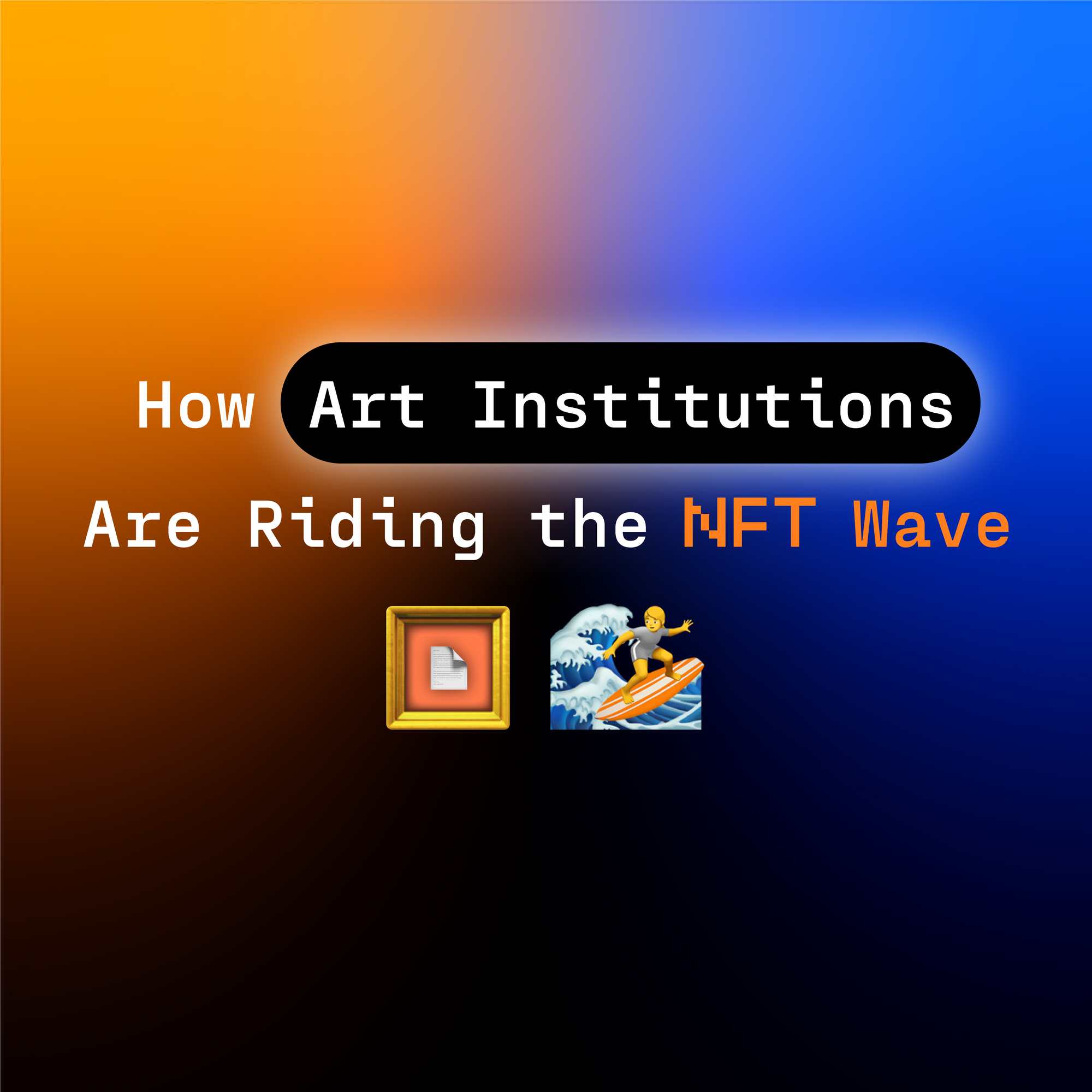How Auction Houses, Art Galleries and Museums Are Riding the NFT Wave
By Terrain.art | Oct 13 2021 · 5 min read
Famous auction houses are turning priceless artworks into profitable NFTs.
It is the hottest new trend in the tech world, and famous auction houses, art galleries, and museums are jumping on the bandwagon. Ever since an NFT (non-fungible token) of American digital artist Beeple’s artwork sold for a whopping USD 69 million at Christie's auction house, other art institutions have realized the vast potential of the digital token and are coming up with their own platforms that promise to make transactions of NFTs popular.
Sotheby’s auction house, for instance, recently introduced a new NFT platform called Sotheby’s Metaverse that allows teams and individuals to purchase NFTs using Ether or Bitcoin currencies. The British Museum is also venturing into the emerging world of NFTs by partnering with a new platform to launch digital postcards of its in-house and international collections of priceless artworks. Many critics say that the emergence of NFTs has given a fresh lease of life to art galleries and museums across the world that have been grappling with plummeting footfall and criticism of elitism.
NFTs and the Art Scene
For ages, museums and galleries have been the fulcrum of western culture and civilizational progress. From the Greeks and Romans to the Renaissance and Enlightenment — public art galleries and museums have displayed the art and architectural marvels of the western world in their full glory. Auction houses have been a late starter. Most of the famous auction houses came up at the turn of the 18th century when money shifted hands from the earlier gentry to the new bourgeois class. Over the years, auction houses have moved to the forefront of the art scene, selling priceless artworks and catapulting many artists to international stardom.
However, these institutions have not been without their fair share of criticism. The art market — a veritable labyrinth of private art galleries, auction houses, middlemen — has eluded the common art enthusiast and even lesser-known artists. These institutions have been considered as too elitist and out of reach of common people.
NFTs seek to change the game. NFTs are certificates of authenticity attached to digital assets, such as images, music, videos, and artworks. They operate through blockchain — a decentralized digital ledger mechanism — that seeks to verify an asset’s authenticity and ownership. NFTs, therefore, solve a long-standing issue of counterfeiting and sale of fake artworks — both of which have plagued the art world since many decades.
Why are NFTs so popular?
But what explains the wild popularity of NFTs? The attraction of NFTs lies in its ability to securely value and exchange digital art using a digital ledger. While early NFTs were mainly related to online gaming, their popularity has surpassed that virtual world. With Christie’s auction embracing NFTs and other auction houses and art galleries following suit, it seems as if NFTs have received the ultimate stamp of approval in the art market.
There are other reasons as well. NFTs seek to do away with middlemen in the art market. NFT platforms allow digital art to be tokenized and the ownership to be safely stored using a decentralized, open source blockchain technology using smart contract functionality. This means that anyone can check the ledger for ownership and authenticity.
There may also be a deep psychological reason behind the popularity of NFTs. These are usually created by uploading digital artwork to an auction market. Since NFTs are unique, non-fungible and not mutually interchangeable, they turn the work of art into a unique collector’s item — a sort of a limited-edition piece about which you can brag on the digital space.
Some Popular NFT Art Platforms
A month after Christie’s auction house sold a digital artwork for an astronomical sum, other auction houses, art galleries and museums joined the fray. Here’s a look at some of the highlights:
- Sotheby’s NFT platform Sotheby ‘s Metaverse will allow individuals to purchase NFTs using Ether, Bitcoin, and fiat currencies. Powered by a tech start-up called Mojito, this platform will include dynamic auctions and ability to mint generative artwork.
- Auction company Philips recently offered its first NFT, Mad Dog Jones’ Replicator, which fetched a total of USD 4.1 million.
- Per reports, China’s premier auction house China Guardian will launch famous crypto artist Song Ting’s NFT artwork, Butterfly in Peony Pavilion Reve -Information Technology Penetrates Me, in the Contemporary Art Night (2) in its forthcoming auction.
- Heritage Auctions is partnering with Scott E. Fahlman, a computer scientist, to offer an NFT of the world’s first online emoticons — the smiley and the frowny faces.
- Finally, Christie's, which has been the pioneering force behind NFTs in the art market, will auction nearly 31 NFTs that are considered to be some of the oldest in the Ethereum blockchain. The auction house’s NFT platform Christie’s Encrypted seeks to “responsibly steward the art community with a view towards the development of a sustainable NFT-based artwork environment.”
Although buying priceless artwork may be out of reach for many art enthusiasts, Terrain.art is now providing an opportunity to buy original Indian and international art along with certificates of authenticity in the form of NFTs.

